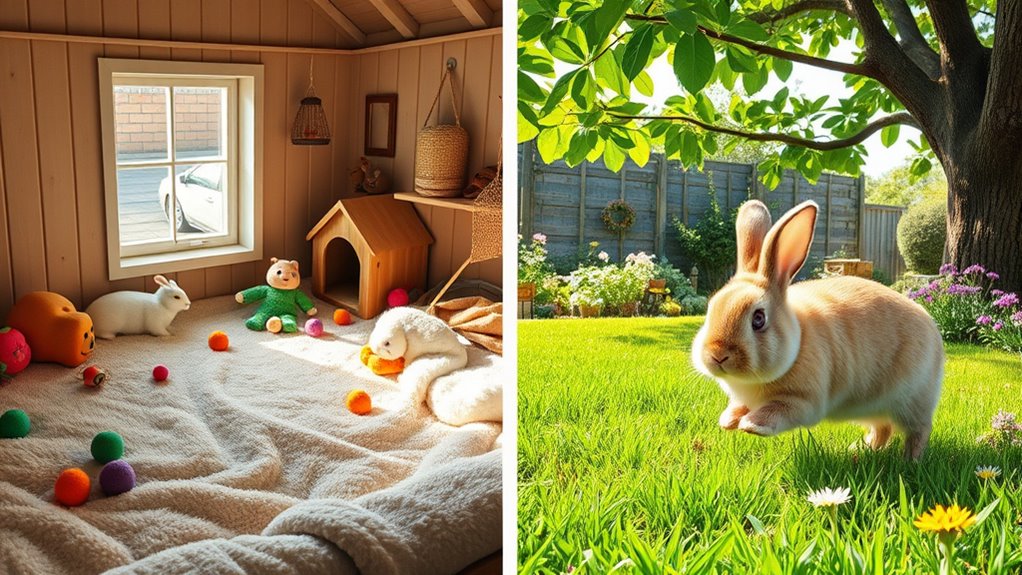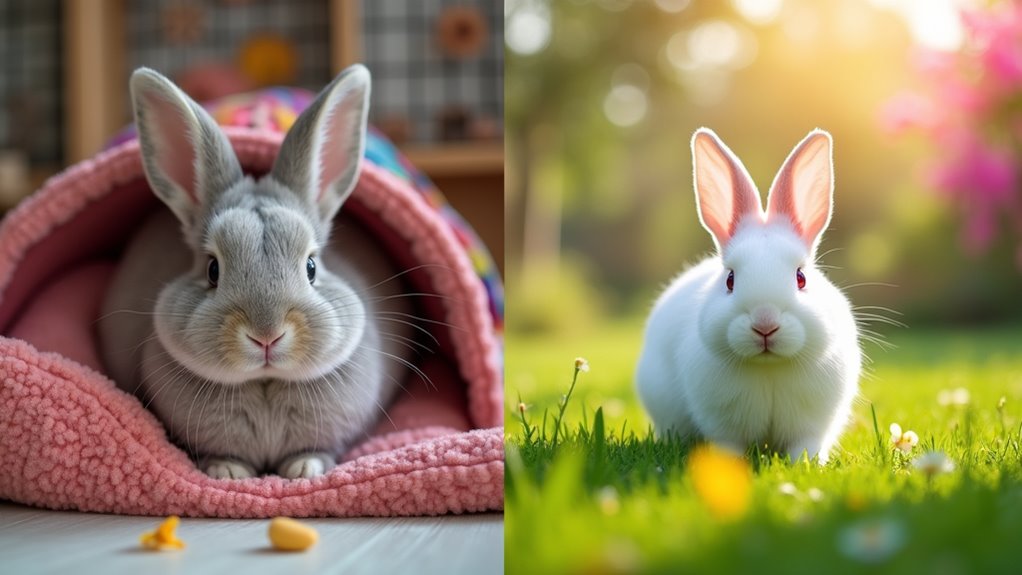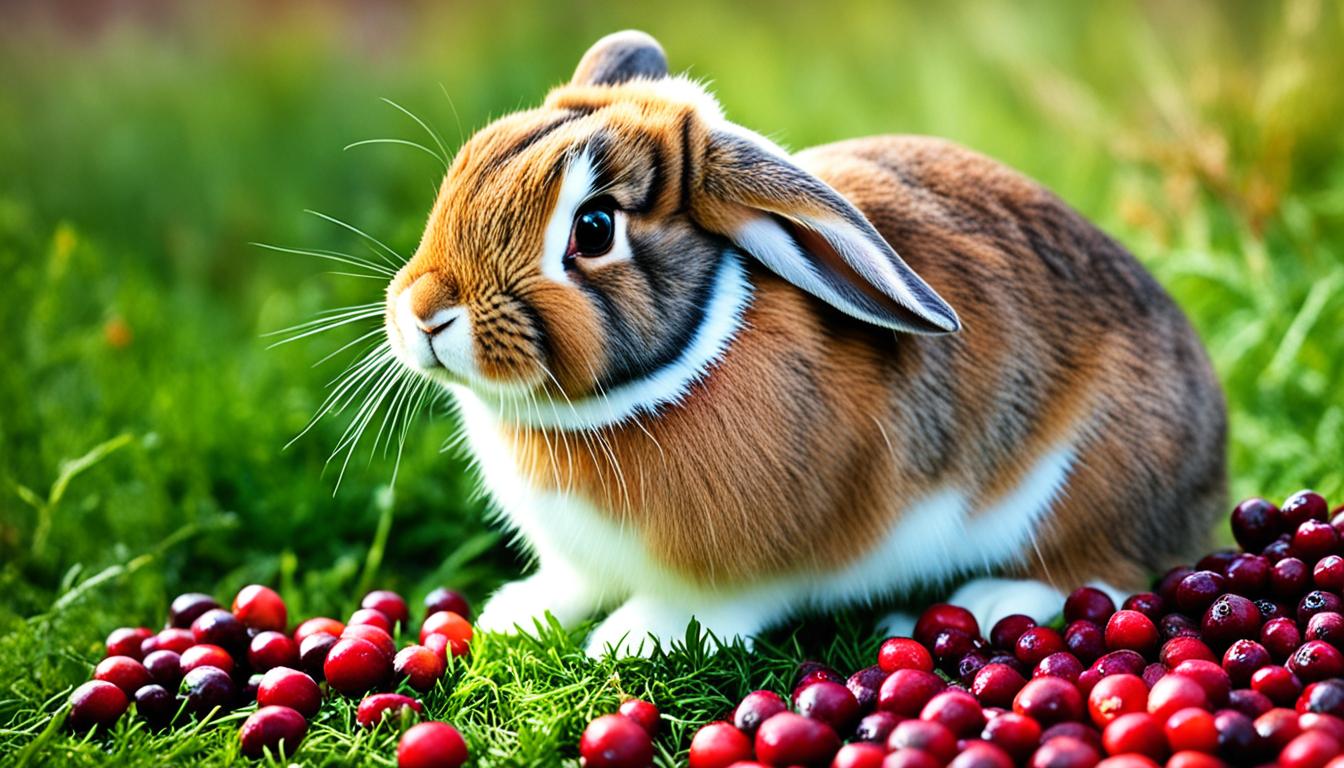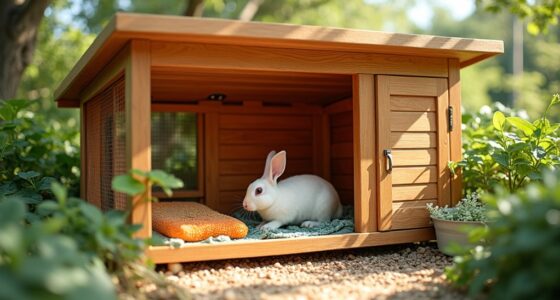To keep your bunny safe and happy, decide whether they’ll live indoors or outdoors based on safety, climate, and environment. Indoor rabbits have lower risks from predators, weather, and household hazards, making supervision easier. Outdoor rabbits need secure enclosures, protection from predators, and climate control to prevent heatstroke or hypothermia. Both setups require regular checks and adjustments. Want to learn how to optimize either environment for your bunny’s well-being? Keep a close look to guarantee your rabbit thrives.
Key Takeaways
- Indoor rabbits enjoy controlled environments, reducing risks from predators, extreme weather, and household hazards.
- Outdoor rabbits need secure, predator-proof enclosures with weather protection and regular safety inspections.
- Temperature regulation is easier indoors, allowing for consistent comfort with fans, heaters, or air conditioning.
- Outdoor setups require shade, shelter, and climate monitoring to prevent heatstroke or hypothermia.
- Both environments demand ongoing safety checks and environmental adjustments to keep rabbits healthy and happy.

Choosing between keeping your rabbit indoors or outdoors depends on your lifestyle and your rabbit’s needs. Each option offers unique benefits and challenges, so it’s important to think about safety, comfort, and the environment. If you decide to keep your bunny outdoors, you’ll need to prioritize hunting safety. While rabbits are prey animals and natural targets for predators, outdoor enclosures should be secure and predator-proof. Use sturdy fencing and lockable lids to prevent foxes, raccoons, or birds of prey from gaining access. Regularly inspect your setup for vulnerabilities, especially after storms or heavy winds, to ensure your rabbit remains safe. Additionally, outdoor spaces require careful temperature control. Extreme heat can cause heatstroke, while cold weather can lead to hypothermia. Provide shaded areas and shelter that blocks wind and rain, and consider adding heating elements during winter nights. Proper ventilation and insulation keep your rabbit comfortable year-round. Ensuring your outdoor setup includes temperature regulation measures is crucial for your rabbit’s wellbeing. Including environmental control options such as fans or heaters can further enhance your rabbit’s comfort during extreme weather conditions. Furthermore, monitoring humidity levels is vital to prevent respiratory issues and ensure a healthy environment for your bunny. Also, incorporating regular health checks can help identify any issues early and maintain your rabbit’s overall health.
On the other hand, keeping your rabbit indoors offers greater control over its environment. You can easily manage temperature fluctuations and reduce exposure to outdoor dangers. Indoors, it’s easier to regulate temperature control—using fans, heaters, or air conditioning as needed—so your rabbit stays comfortable regardless of the weather. This setting also minimizes hunting safety concerns, since predators are typically not a threat inside your home. You can supervise your bunny more closely, preventing it from chewing on electrical cords or ingesting harmful objects. Indoor living also makes it easier to establish a routine that includes social interaction, mental stimulation, and grooming, which all contribute to your rabbit’s happiness. However, you’ll want to guarantee your home is rabbit-proofed: secure cords, remove toxic plants, and provide plenty of toys. Both environments require your attention to detail and a proactive approach to safety. Remember, rabbits are sensitive creatures that thrive when their environment is stable and secure. Regularly check on your bunny, regardless of where it lives, and adapt your setup as needed. With thoughtful planning and care, you can ensure your rabbit remains healthy, happy, and safe in its chosen home.
Frequently Asked Questions
What Are the Best Toys for Indoor Rabbits?
You want the best toys for your indoor rabbit, so focus on engaging options like puzzle toys that stimulate their mind and keep them active. Chewable items are also essential to satisfy their natural urge to chew and prevent destructive behavior. Look for safe, non-toxic materials, and rotate toys regularly to maintain their interest. These toys will help keep your bunny happy, healthy, and mentally stimulated inside your home.
How Can I Prevent Indoor Rabbits From Chewing Cords?
Think of your bunny as a curious explorer, constantly discovering new things. To prevent indoor rabbits from chewing cords, use cord protection like spiral wraps or plastic conduit, making cords less tempting. Incorporate chew deterrents such as bitter sprays to discourage gnawing. Keeping cords out of reach and providing plenty of safe toys redirects your bunny’s energy, ensuring they stay safe and your electronics stay intact.
What Are Signs of Outdoor Rabbit Stress?
You’ll notice signs of outdoor rabbit stress if your bunny becomes overly agitated, thumps loudly, or avoids the rabbit enclosure. They may also lose appetite or hide more often. Outside, predator threats can cause constant fear, leading to nervous behaviors. Keep a close eye on their activity and demeanor, ensuring their enclosure offers shelter and safety. Recognizing these signs helps you address stress promptly and protect your rabbit’s well-being.
How Often Should Outdoor Rabbits Be Vaccinated?
You should vaccinate your outdoor rabbit based on a proper vaccination schedule recommended by your veterinarian, typically once or twice a year. Regular vaccinations are vital for outdoor pet care because they protect against common diseases like myxomatosis and rabbit hemorrhagic disease. Keep in mind that outdoor environments expose rabbits to more risks, so sticking to the vaccination schedule helps keep your bunny safe and healthy.
Can Indoor Rabbits Enjoy Supervised Outdoor Playtime?
Yes, you can let your indoor rabbit enjoy supervised outdoor exploration. Just guarantee the time is brief and always supervised to prevent escapes or encounters with predators. Use secure enclosures for outdoor rabbit enrichment, and check the environment for hazards like toxic plants or extreme weather. This way, your bunny benefits from fresh air and stimulation while staying safe, making outdoor play both enjoyable and secure.
Conclusion
Whether you choose to keep your rabbit indoors or outdoors, ensuring their safety and happiness is key. Did you know that indoor rabbits tend to live up to 8 years longer than outdoor ones? By providing a secure environment, regular vet visits, and plenty of enrichment, you can make sure your bunny thrives. Remember, a happy rabbit is a healthy rabbit—so choose the setting that best suits your lifestyle and keeps your furry friend safe and loved.










